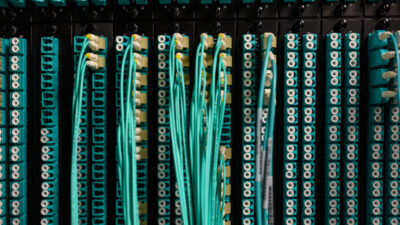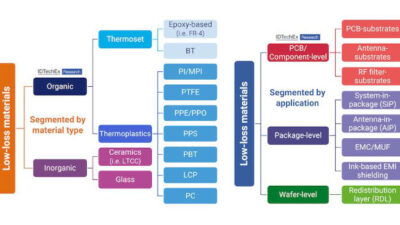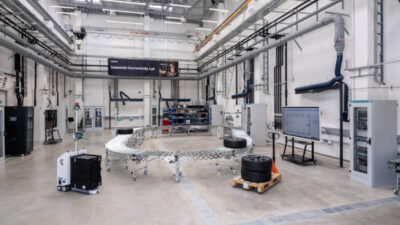When starting to design a wireless network, it is important to define the who, what, when, where, and why of the installation, and what each aspect means for a company and those involved.

Wireless networks can provide great value and cost savings in industrial installations. The ability to provide information from point A to point B with the same reliability and accuracy as a wired network, while at the same time saving money, is a huge benefit — so long as the implementation is thought through and designed correctly. Designing a wireless network has many variables and unknowns, simply because those involved cannot “see” everything in the air.
With wired networks, users know where data is going, what else is “on the wire,” and can predict how the network can perform. The same can be said for wireless systems if the user takes the correct steps during the design and validation process.
When starting to design a wireless network, it is important to define the who, what, when, where, and why of the installation.
Who are the key network stakeholders; who will maintain the network?
When first discussing the implementation of a wireless network, it is important to know who will be financing the project, as well as who will be using and maintaining the network. These could be two different groups of people who have different views on how the network will be implemented.
Is an engineering group funding the project or an executive group? Each of these groups has different goals. The engineering group is looking for the best solution to solve a problem.They will not necessarily focus on the cost of the system, as long as it solves the problem. An executive management leader may be more focused on the ROI and cost of the system. To make the design process more manageable, it is important to know which of these groups is involved (and it could be both) and how to satisfy their concerns with a reasonable solution.
From the day-to-day side of the installation, operations technology (OT) engineers focus on the data coming from the network that relates to the application. They want to get the data in a visual, readable way so they can efficiently interpret it, for example, a human-machine interface (HMI) screen or webpages for the Ethernet devices. Information technology (IT) engineers also are interested in the data but more in the raw format. They want to be able to manage, maintain, and configure the wireless system but with the tools they use daily. Using a command-line interface for these types of functions is more native to an IT engineer than a web manager.
What is the expectation of the network? What is the use case?
The “what” question is probably the most overlooked and underappreciated question in the wireless design process. What is the user’s expectation of the network? It isn’t enough to ask, “What do you want it to do?” What the user wants the network to do and what is possible are two completely different things.
For example, if a customer expresses need for remote access to a programmable logic controller (PLC), it sounds like a simple application. Other “what” details could make a difference: What if this PLC is 5 miles away, without wireless infrastructure, and data must be available 24/7? Digging deeper and understanding the customer’s needs and expectations is important. Getting all requirements upfront makes it easier to provide a suitable solution.
With these details, the design engineer can accurately discuss options with the customer. Discuss what can and cannot be achieved and give a realistic estimate of how much it costs to do what they want the way they want it done, or provide an alternative approach, which might cost less, but have some limitations. The design engineer can evaluate, test, and validate the design based on those expectations.
When are the deadlines for each installation milestone?
Knowing the project timeline is important because it can help define what wireless solutions are possible. Some projects have long cycles, which include specification, bid, design, test, installation and validation. These projects can take months or years to complete. Other projects could be just days from idea to installation. Knowing the user’s timeline will help the company plan time accordingly and help communicate what is and what is not possible to the customer in that time frame. If the customer needs a quick turnaround but also requires installation of some infrastructure — such as antenna towers, permits, or renting vehicles — let the user know if the requested time frame is possible or not.
Where is the system being installed?
Knowing where the system is going to be installed is important. The design engineer needs to know what infrastructure is available for the new wireless system. Is conduit available? Are equipment rentals needed to install new equipment? Are antenna towers already erected, or will new ones be needed?
Second, are there any existing wireless systems or planned wireless systems in the same area? In today’s world, wireless is everywhere, but it cannot be seen. Knowing the location of the new installation allows the designer to evaluate and research wireless systems already in the area. Involve the owners of those systems in the conversation, so the new design can coexist with existing installations.
Why are they installing a wireless network?
Why is the customer installing a wireless system? Why not run a cable? Why install a wireless system in general? Are they installing the wireless system to solve a problem? Is that problem costing the user money? Do they have extra budget they need to spend before the end of the year? Are they trying to comply with a new process specification required or they get fined? These questions help give the designer an idea of the importance of the installation and how to design based on that knowledge.
For example, if the user is installing a wireless system because they have extra budget at the end of the year, they will have a fixed budget. The proposed system design needs to be considered based on a fixed budget. On the other hand, if it is a mission-critical upgrade because the company is losing communication to assets and every minute they are down they lose thousands of dollars, the design may be different and demand a premium.
The most important thing is to understand the why and have good and open communication with the user throughout every step of the design process. If the “why” changes, the design might change as well.
Thorough planning prevents heartache
Understanding the who, what, when, where, and why aspects of a system design is crucial to a successful wireless installation. Gather all the details from the user in the beginning and keep an open line of communication. If changes occur during the project, discuss them with the customer, and explain how those changes will affect the overall system from a cost, function and reliability standpoint.
Do not be afraid to ask for more explanation from the user. More often than not, if it’s being asked in the first place, that means the user hasn’t thought about it, either. Asking those questions now could save a lot of heartache later.
Justin Shade, senior product marketing specialist — wireless, Phoenix Contact USA. Edited by Chris Vavra, production editor, Control Engineering, CFE Media, [email protected].
MORE ANSWERS
Keywords: wireless networks, wired networks, operations technology
Wireless network installation requires a great deal of planning from the design engineer and the customer.
The design engineer needs to gather as much information as possible before beginning a project.
Open communication and a willingness to ask as many questions as possible will spare both sides trouble later.
Consider this
What was the biggest consideration or challenge when your company installed a wireless network?



